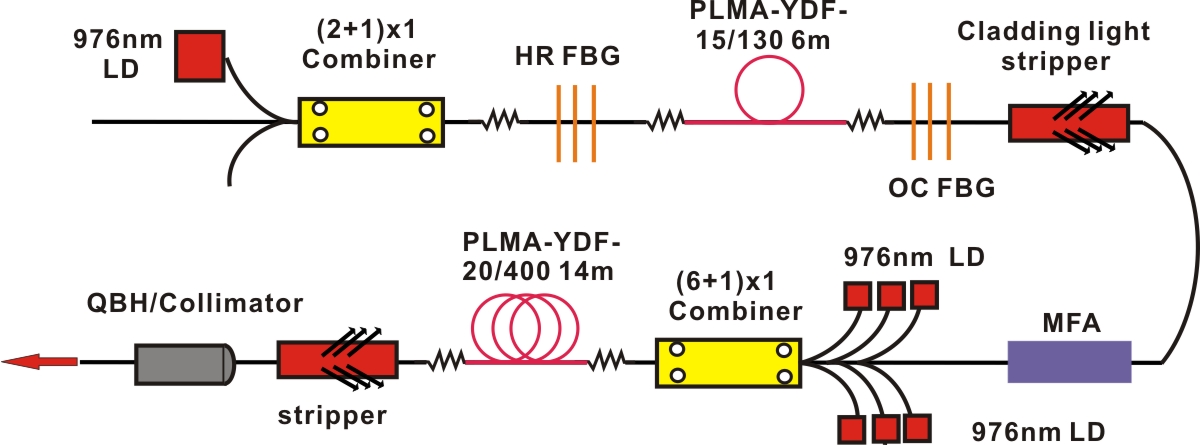High power fiber laser Applications
In recent years, fiber lasers have received significant attention due to their outstanding heat dissipation performance, high conversion efficiency, low pumping threshold, wide tunable range, and good beam quality, and have been rapidly developed. There are many types of fiber lasers. Among them, the most rapid development and the most obvious application prospects are rare earth doped double-clad fiber lasers, which represent the development direction of high power doped fiber lasers. High-power double-clad fiber lasers combine the latest semiconductor laser fiber-coupled module technology,
Pumping technology and double-clad rare earth doped fiber fabrication technology. Its application fields are further extended to industrial processing, laser medical, space communication, military and other fields on the basis of traditional optical communication, optical fiber sensing, and spectroscopy analysis.
Structure and principle
The fiber laser consists of a gain medium that can generate photons, and the photon is fed back to the optical cavity that is resonantly amplified in the gain medium and the pump source that excites the optical transition. The gain medium of the high-power rare-earth doped double-clad fiber laser is a double-clad fiber doped with rare earth elements. The semiconductor laser diode array is used as the pump source. The cavity is usually a fiber grating, which can narrow the line width and improve the beam quality. The fiber optic combiner is used to couple the pump light into the gain fiber. The gain fiber forms a population inversion after absorbing the pump light. The pump light forms an oscillation in the cavity and reaches a threshold value to form a laser output.

Figure 1: 1kW Ytterbium-doped single-transverse-mode, linearly polarized monolithic fiber master oscillator power amplifier
System required devices:
- Pump diode: Provides energy as a pump source. You can choose single tube or Bar strip. When selecting the system, you need to consider the factors such as brightness, efficiency, cooling and price.
- Fiber Combiner: The fusion of multiple fibers into a single fiber for pump coupling is the key to achieving full fiberization of high-power fiber lasers. Single-channel can withstand hundreds of W of power.
- Doped fiber: Many rare earth ions can be used to fabricate rare earth ion-doped fiber lasers with operating wavelengths between 0.4um and 4um, as shown in the following figure.
- Fiber grating: equivalent to a high mirror, forming a laser cavity, and plays the role of selecting the laser wavelength and output coupler.
- Fiber collimator: The output end of the fiber is connected to the collimator to realize the spatial collimated output of the laser in the fiber.
DK Photonics offers a variety of passive components for building high power fiber laser systems, DK Photonics could provide pump combiner, MFA, CPS, optical circulator, optical isolator, tap coupler, collimator, WDM, in-line polarizer, and PBS with PM fiber or NO-PM fiber from 850nm~2000nm wavelengths. Contact DK Photonics regarding your requirements.
Click here to download the PDF file:


